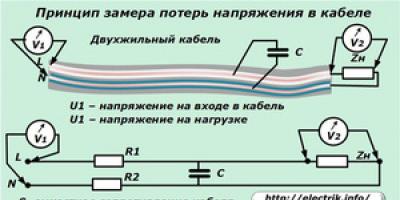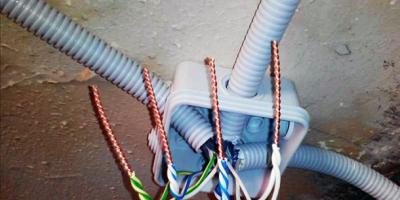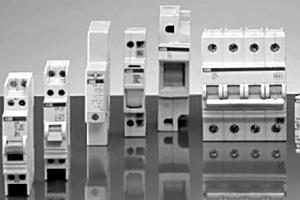In the warm season, from May to October, wood is easily affected by wood-staining fungi. They do not cause any particular damage to the tree, but the presentation is lost because the wood turns blue and black. In addition, blue color creates a breeding ground for wood-decaying fungi. The color of wood exposed to open space also changes under the influence of ultraviolet radiation, first acquiring a yellowish tint, gradually turning into a dirty gray. The problem of mushroom stains can arise in sawmilling, during the storage of sawlogs and lumber, during the construction process, as well as in a constructed wooden house.
It is especially offensive to the owner of a newly built house - a black log house is not at all pleasing to the eye. You can combat this sad fact in several ways: paint, sheathe it with other material (for example, siding), sand or trim off unsightly stains and, finally, use chemical bleaching, which will be discussed. Bleaching can be used both in primary woodworking and in wooden house construction, carpentry and furniture production, as well as in the pulp and paper industry. The natural color of the wood is restored, and the structure is completely preserved. However, it should be taken into account that lumber, which will subsequently be subjected to further processing, can only be bleached superficially; during planing and profiling, colors may again appear on its surface. Another thing - wooden house. It will look like new. In furniture production, bleaching is used to make the wood surface more light color, evening out the color of the core and sapwood and removing stains. Pulp bleaching is a complex chemical process carried out using a variety of chemicals and processing equipment under high temperatures and pressure.
What types of wood bleaches are there?
Conventionally, bleaching chemicals can be divided into two groups: those containing chlorine and those not containing it. The first include sodium and potassium hypochlorite, bleach, chlorine dioxide. The second includes various salts and alkalis in combination with hydrogen peroxide, oxalic acid, acetic acid, ammonia, ozone.
Active oxygen-based bleaches work great on aged wood, but are less effective against staining fungi. They do not have unpleasant odor(if they do not contain ammonia) do not require thorough rinsing with water after treatment, but their working solution is viable for a short period of time.
In addition to the main components, the bleach contains substances such as stabilizers that slow down the decomposition of bleaching components, fungicidal additives, agents that improve the penetration of the solution into wood, catalysts, thickeners and surfactants ( detergents). Fungicidal additives serve to protect against fungi and mold after bleaching; agents and catalysts do not themselves participate in bleaching, but help the bleaching agent penetrate the pigments. Thickeners allow you to apply a larger layer of bleaching composition to the surface of the affected wood, and surfactants help wash away contaminants.
How is wood bleached?


When wood is treated with bleaches, the pigment bonds of lignin become discolored due to the destruction of chromophore groups and discoloration of the cells of wood-staining fungi.
When is wood bleaching necessary?
In wooden house construction, the need for bleaching may arise as a result of improper storage of the material, in warm and humid weather, or in conditions of unventilated timber.
It is impossible to plan damage to wood; it can occur at any time during construction. It is advisable to carry out bleaching immediately after detecting that the wood has been painted in an uncharacteristic color.
The need to bleach lumber usually arises for two reasons: damage to the lumber stock and damage to the lumber.
In the first case, it is possible to determine the need for bleach, but in the case of lumber, it is impossible to plan for such a need; it arises as the problem is identified.
Both builders and lumber manufacturers are among the most common users of bleach. This is sometimes explained by purely economic considerations, because the cost of blue-affected lumber is $80 per 1 m, and the cost of high-quality lumber reaches 250 euros per 1 m. However, in the case of lumber processing, it must be remembered that after planing the fact of bleaching will be obvious, since the impact of chemicals is less deep to whiten the wood throughout its entire thickness, and is about 2 mm.
Another thing is bleach treatment. finished products, for example rounded logs or joinery. The need for bleaching arises if you need to cover them transparent compounds, lighten the overall background or remove stains. The requirements for the surface of joinery products are high, therefore the bleaching composition should not destroy the structure of the wood or impair adhesion, while the action of the composition should be gentle in order to preserve the natural pattern.
What is required from wood bleaches?
Bleaching agents used in sawmilling, house building and carpentry production, must have some necessary properties. The composition should not destroy wood. Should be easy to prepare and apply.
Of course, the natural color of the wood must be preserved. Necessary properties also include maintaining the possibility of applying tinting coatings, adhesives and transport, as well as preservative antiseptics after bleaching. The bleach must be safe.
It should be taken into account that bleaching is not a protective measure and the affected wood, after restoration of its natural color, can be again affected by wood-staining fungi.
Regina BUDARINA
If the wood has lost its attractiveness appearance, then you can give it a second life by bleaching the surface. There are many options for this, including, for example, chlorine. These substances are available and inexpensive, so you can use them at home.
Bleaching with chlorine: preparing tools and materials
Wood bleaching can be done using chlorine, and you must prepare:
- crystalline soda;
- sodium hydroxide;
- bleach;
- water;
- perhydrol.
Speaking of the last point, it is worth noting that to carry out the work you will need a 30% solution of hydrogen peroxide. It should be remembered that such work must be performed with gloves.

Carrying out bleaching
Wood bleaching must be carried out using a certain technology. To do this, you should prepare a special solution of eight shares, which must be mixed with one share of salt, adding 35 parts of water. The resulting mixture is stirred and the solution is allowed to brew, only then can you begin processing the wood.
The second option would be to prepare a solution by mixing 48 grams of the chemical with water in a volume of 100 grams. The caustic soda solution must be applied to the surface of the wood, which is then dried. Sometimes home craftsmen treat wood with perhydrol, it is final stage dried, and if bleaching turned out to be insufficient, the procedure can be repeated. In order to neutralize this area, you should wash it with a 4% solution. acetic acid and then dry well.
Wood bleaching is sometimes carried out using hydrogen peroxide, as well as ammonia. "Hydroperite" tablets are diluted with water: 10 tablets per glass of water (200 ml). While 5 percent is added in a volume of 25 milliliters (its smell should be clearly felt). It is necessary to soak the wood in this solution and leave it for several days, and you should expect the effect that the surface will become completely white.
The use of peroxide, although effective, is not suitable for all types of wood. For example, oak may not change color after processing, while this method is ideal for bleaching walnut, birch and beech. It is important to use the correct one which should not be less than 30%. The surface must be wetted before application. warm water and cover with 5% ammonia. After bleaching is completed, the surface is cleaned using a mixture of bleach and soda ash. For 15 grams of lime, add 3 grams of soda and 100 grams of water.

Uses of oxalic acid
Do-it-yourself wood bleaching can be done using oxalic acid, but such work is carried out with great care. This is due to the fact that the desired effect can be achieved only with the correct percentage of components. To do this, prepare a 10% solution of oxalic acid and sodium hydrogen sulfate at a concentration of 20%. Sodium hydrogen sulfate is applied to the surface at the first stage, and then a solution of oxalic acid. After 5 minutes, the compositions are washed off with water.

Nuances of the work
Wood bleaching can be carried out by different technologies, however, at the final stage, all products must be washed off the surface. If you decide to use acid bleach, you need to wash it off with an aqueous solution. Bleaching agents cannot be combined. It is not recommended to subject glued products to such processing, as they may come apart. If you want to bleach pine wood in a short time, then the surface can be treated with a solution of sulfuric acid (taken in an amount of 20 grams), sodium peroxide (in a volume of 25 grams) and oxalic acid (in an amount of 15 grams). Liquid is added in a volume of one hundred grams.

Using Acrylit 153
Bleaching wood with whiteness is considered very effective, but alternative solutions can be used, for example Acrylit 153. This product is specially designed for darkened wood and is able to remove microorganisms without interfering with the breathing of the material, and without destroying its structure.
The substance does not affect the strength, adhesion and porosity of the surface in any way and does not change the smell of wood. The same cannot be said when wood is bleached with white; proportions, by the way, do not need to be observed. To carry out the work, you will need to moisten the sponge in the solution and apply the composition to the surface.
But as for Acrylit 153, before use it must be diluted with water using a one to one ratio. If the wood is damaged sufficiently, there is no need to dilute the product; the composition should be applied to the surface with a roller. If the whitening does not seem too intense to you, then you need to repeat the procedure after five hours. It is noteworthy that this product can even be used to bleach pine.

Additional solution
On sale today you can find the product “Valkor”, the cost of which is 1800 rubles. Its coloring is carried out in five minutes. You can use an alkyd-oil stain, which has almost no odor, but helps whiten the wood to an almost white state. Among the ingredients of the mixture there are antiseptic additives, so the stain does not need to be covered with anything after finishing the wood. As practice shows, this product perfectly bleaches birch, and even under varnish on water based the surface remains noticeably lighter.
Sometimes experts use oil- and wax-based paint Decorwachs Deckend. It has a transparent structure, and after covering the wood, only the texture remains visible. Gradually, veins of material appear on the surface. On sale you can find oil with hard wax, which when applied allows the formation of a pinkish tint of oak. If we are talking about pine, then it will simply turn white, leaving a texture. The coating is applied in two layers, and then covered with colorless oil and hard wax. As a result, you will be able to obtain a silky surface. After coating, the wood not only becomes lighter, but also becomes harder, which is possible thanks to
Conclusion
Bleaching wood with chlorine, like each of the above options, is an effective method. It’s up to you to decide which method to use; it all depends on your budget and your own preferences.
It is with deep regret that I inform you that you have landed on a blue page. And this blue stain must be urgently removed from the timber of your log house - how bleach log timber! Unfortunately, our warm, beautiful, natural wood(more precisely wood) is susceptible to rotting and can deteriorate under the influence of fungi and mold. Blue stains on timber or logs, on boards or linings are the result of improper storage or conservation of wood products.
Diverting from the topic of direct bleaching of wood, let me remind you that this matter must be stopped at all stages of processing the wooden parts of a wooden house. Immediately after harvesting the trunks (transport preservation), during storage (temporary preservation) and after making crowns or installing walls (antiseptic treatment and final painting)
How to bleach wood, depends on what kind of damage the parts of the log house received. Typically, blue stains appear on fresh, damp wood even before the stage of final processing of parts. It is during storage with poor ventilation that the fungus begins to spread as quickly as possible. They can only help.
Causes of blue wood products:

Conclusion: in order not to bleach the wood of the wooden parts of a bathhouse or house in the future, it is necessary to use construction chemicals at each stage of construction.
Wood bleach
In the old days, so as not to bleach the wood, they sometimes added salt to it! This delayed the process of the appearance of fungal infection for some time.
One of the oldest methods of bleaching wood using household chemicals– use of laundry bleaching agents. Alas, it makes no difference where this mold settles, so the methods of control are the same. “Whiteness” is a remedy for housewives. But it can save damage to the upper layers of a board or log at the initial stage. If the blue begins to turn into black, then one pass of the brush is not enough.
For more effective whitening wood needs to be prepared for this process, namely: smooth surface make it loose so that the mold and fungi killer gets as deep as possible. Therefore, many masters recommend using Sagus before bleaching. Chlorine wood bleach « Sagus", according to the manufacturer, can cope with any lightening and restore natural color. But where is the line that separates the natural color of wood from dead whiteness?! To be precise, chemical bleaches do not really remove color from wood. By reacting with the chemicals that make up the blue stain, the bleach forms another substance that is no longer blue or black. Therefore, it is extremely important to ensure that the surface of the parts is free of any kind of protective coatings in the form of paints, varnishes, emulsions, fats, etc. Translucent azures “transmit” blue well even through themselves. Therefore, it is impossible to simply cover a blackened log with paint: 1) it will still be visible through the varnish, 2) it is fraught with deep damage to the log house or timber.
Some “Kulibins” recommend this brutal method how to bleach log beams and get the original look of wood - treat the surface hypochloride. They argue this by saying that all other drugs of modern chemistry contain this substance. Personally I don't like it Such methods can lead to the fact that the wood can receive a chemical burn and lose its aesthetic properties. Stabilizers are added to concentrates created in factories to prevent the destructive effects of chemical compounds. They limit the depth of their penetration and stop activity after a certain time of exposure.

I would not discount such a complex method of bleaching a log or beam as sanding, which removes the damaged layer quite deeply. But this method is the most expensive and does not guarantee cleaning of fungus and mold in the corners where grinding wheel won't be able to get there. recommended for very deep wood damage, when chemically it is not possible to remove all areas of blackening and blueness
Factory-produced wood bleaches - they can and know how to bleach the timber of your log house.
|
"White" |
Laundry detergent A folk remedy when nothing is at hand |
|
|
"Sagus" ( LLC "Sagus") |
Wood bleach |
|
|
No comments. Folk remedy Test before use! |
 |
|
|
Wood regenerator. it is necessary to dilute the drug with water in a ratio of 1:1 |
 |
|
|
Bleach TM "Neomid" After use, a residue remains in the form of salt crystals, which must be washed off with water. |
||
|
BioShield |
A means of protecting wood from rotting and at the same time - Bleach |
|
|
Senezh EFFO or Senezh NEO |
For quick deep or superficial lightening of wooden surfaces darkened by mushroom stains |
 |
|
Concentrate for the production of water-based whitening compositions |
||
|
WoodMaster Frost |
Whitening and protective composition. Whitening and protective composition for wood. Removes blue stains, rot, mold |
 |
 All chemicals found in wood bleaches typically contain substances that are not safe for health and can be dangerous if used incorrectly. Be sure to take precautions to protect yourself from contact with such substances and avoid inhaling their fumes. Wear gloves and safety glasses. If necessary, use a gas mask (not a respirator)
All chemicals found in wood bleaches typically contain substances that are not safe for health and can be dangerous if used incorrectly. Be sure to take precautions to protect yourself from contact with such substances and avoid inhaling their fumes. Wear gloves and safety glasses. If necessary, use a gas mask (not a respirator)
Before bleaching, consult with specialists in How to bleach timber.
The best bleaches are those that do not destroy lignin, the basis of wood.
It is better to bleach the entire surface of the wall so that individual logs of the wall do not look like black sheep in the design.
Using too much chemicals can kill the wood's grain and shades, making them look like plastic sticks.
The air temperature during bleaching is not lower than 5 degrees Celsius, so that the reaction takes place intensively.
So you have built your wooden house. You just want to admire it: the natural texture of the wood, the pleasant color - everything is new and fresh. Unfortunately, over the years his appearance will deteriorate - Sun rays, mold and “blueness” will equally or later cause the walls to change color.
Wood bleaching is a simple and reliable way to return the walls of your home to their original appearance. True, its effectiveness is determined by the depth of the lesion: if it exceeds 3 mm, the composition will not be able to penetrate inside.
Blue stain is a defect in wood, as a result of which it changes its color to blue-gray and bluish. The cause of the lesion is marsupial fungi. Blue stains do not affect the strength of the walls of the house, but greatly impair the aesthetic qualities. In addition, marsupial fungi can damage protective coatings, as a result of which the wood begins to rot.
Principle of wood bleaching
All wood bleaching products work on the same principle: they cause an oxidation process, as a result of which the pigment colors of lignin (a substance that characterizes the woody walls of plant cells) become discolored, and fungal cells are destroyed. Reactive oxygen radicals are responsible for whitening.
Bleaching compounds are divided into those containing chlorine and those not. The first contains: potassium hypochlorite, sodium hypochlorite, chlorine dioxide and bleach. In chlorine-free formulations, the active ingredients are: hydrogen peroxide, ammonia, salts, alkalis and oxalic acid.
Do-it-yourself wood bleaching
Faced with the problem of changing the color of the walls of the house, many decide to deal with it on their own. For this purpose, inexpensive and available liquids for bleaching wood - hydrogen peroxide and oxalic acid.
Whitening wood with hydrogen peroxide - simple and effective method. But it does not work on all types of wood. For example, peroxide does not bleach oak, but even changes its color. But it is ideal for bleaching birch, beech or walnut. Correct concentration chemical solution– no less than 30%. Before application, the walls of the house are moistened with warm water and covered with a thin layer of ammonia (10%). After the bleaching procedure, it is necessary to clean the surface using a mixture of soda ash and bleach. For 15 grams of lime you need to take 3 grams of soda and 100 grams of water.
Bleaching with oxalic acid should be done with caution. The fact is that the desired effect can be achieved by mixing all the ingredients in the correct percentage. You will need a 10% oxalic acid solution and a 20% sodium hydrogen sulfate solution. First, sodium hydrogen sulfate is applied to the surface, then a solution of oxalic acid. After five minutes, the compositions must be washed off the surface with water.
Another way is to bleach wood white. However, when working with white, you must follow safety rules: wear gloves and protect your eyes.
“Rime” for wood bleaching – more modern remedy, returning an attractive appearance to the walls of the house. To work with Iney, you must follow safety rules: dress in a protective suit, wear a mask or goggles, and rubber gloves.
Whitening rules
As you understand, bleaching wood at home is not the easiest thing. However, if you decide to do this yourself, follow the rules.
- Whatever product you use, wash it off with water after application.
- If you use acidic bleach, wash it off with an aqueous solution of baking soda.
- You cannot combine different bleaching agents on the same surface.
- Do not bleach glued products; they may fall apart.
- Want to speed up the process? Treat the surface with a solution of sulfuric acid (20 grams), sodium peroxide (25 grams), oxalic acid (15 grams) and water (1000 grams).
Alternative method
You can do all of the above steps yourself or contact a professional. To bleach darkened wood, we use the composition Acrylit 153. It restores the natural color, effectively removes microorganisms, does not interfere with the “breathing” of wood, does not destroy its structure, does not affect adhesion, strength, paintability and porosity, and does not change the smell.
Acrylit 153 is diluted with water in a ratio of one to one (in cases of severe damage to the wood, it is not diluted) and applied to the walls with a roller. If necessary, after 5 hours the procedure is repeated. The product is suitable for bleaching pine wood.
In order to extend the life of wooden products, you need to take care of their safety in advance. A necessary tool for treating wood parts is bleach.Wood bleach – which one is better to choose?, and what are the criteria for selecting a product?
In contact with
Wood is used quite often in construction, as it looks very beautiful in appearance and is an environmentally friendly material. It is always pleasant to be in a house made of wood; it will always be cool inside in hot weather and warm in cold weather. This secret is based on the low thermal conductivity of the material.
But along with the positive aspects, there are several negative ones: wood is easily affected by external factors, this causes the surface to change color and naturalness is lost. Using wood bleach will help maintain its original appearance. wooden structures, and will also extend the operating time.
What are wood bleaches and why are they needed?
Wood bleach is a product that has a specific chemical composition, which allows you to whiten wood parts. Bleaching occurs due to the oxidation of the material, which affects the pigment of the wood. The drug also destroys fungal cells that have managed to infect the surface.
The composition of products for protecting wooden structures is very diverse; there are a great variety of them on the market. Prices also vary, but it cannot be said that quality depends on cost. For purchasebest bleach It’s worth consulting with experienced people, otherwise there is a risk of not only not protecting, but also spoiling wooden buildings. It is necessary to take into account many subtleties in order to obtain the desired result after using the drug.
Attention!It is important to know the type of wood and its density, as well as the humidity conditions under which the treatment will be carried out.
What leads to a change in the natural color of wood
Tree - natural material which is influenced by many factors. It is necessary to treat these products with care so that they continue to delight with their beauty. Wood tends to change color over time, due to several reasons:
- The influence of direct sunlight. When exposed to UV rays, a photochemical reaction occurs, which leads to a color change. Most often it becomes yellower.
- Reproduction of microorganisms in wood. These include fungi, for which favorable condition It will be a humid environment. Fungi give the tree a blue tint.
Depending on the breed, the product may have different shade after several years of use:
- the oak becomes golden;
- dark ash - brightens, light ash - turns yellow;
- the nut turns red.
It is worth understanding that it is easier to get rid of the fungus at the beginning of the infection,how to bleach wood from bluein a neglected state, since microorganisms are very resistant even to aggressive control methods.
What preparations are suitable for bleaching wood?
 There are different compositions of bleaches on sale, but everything can be classified into two main groups: with and without chlorine. Considering them separately, you can find the pros and cons of both types of funds.
There are different compositions of bleaches on sale, but everything can be classified into two main groups: with and without chlorine. Considering them separately, you can find the pros and cons of both types of funds.
Both options are not harmless. In both cases, a complex chemical process occurs to bleach the wood.
In preparations with chlorine, the active substance is chlorine alkali, and in another version it is hydrogen peroxide, to which ammonia, alkali and a weak acid have been added.
Both options also differ in price and efficiency of use. Products with chlorine are more expensive and not as economical to use.
Neomid – wood bleachbest category, according to customer reviews. The price of the product is low, which makes the drug affordable. The consumption of the product depends on the degree of damage to the material: the stronger, the more concentrated the solution. On average – 200 g/1 sq. m.
Features of application:
- at a temperature of 5 degrees and above: when used indoors, a hood is required, outdoors can be used without fear;
- if at lightening woodsalt has appeared, it can be easily removed with plain water;
- important to carry out before bleaching softwoodwood de-resining,Otherwise it won't work desired effect from Neomid-500.
Homeenpoisto
Also applies to bleaches good quality, the manufacturer is the well-known Tikkurila. Refers to drugs for economical use, enough for a large area.
Features of application:
- can be applied to painted wood - the effect will be noticeable;
- The bleaching time depends on the degree of surface damage. The slightly affected material is covered with liquid for half an hour, then it needs to be washed off. Time increases if necessary.
 – a domestically produced product, created on a water basis. It is produced in large containers, consumption - 130 g/1 sq. m. He copes with his work no worse than his foreign counterparts. The price is significantly lower than others.
– a domestically produced product, created on a water basis. It is produced in large containers, consumption - 130 g/1 sq. m. He copes with his work no worse than his foreign counterparts. The price is significantly lower than others.
Features of application:
- before application, you need to clean the wood from lint for better penetration of the liquid inside, this will also reduce the consumption of the product;
- For visible results, “Sagus” is applied for 2.5–3 hours, then washed off.
Fongifluid Alpa
A French-made drug that has proven itself very well. Although it is expensive, it copes well with any difficulties. Consumption – 1 l/4–5 sq. m.
Features of application:
- Fongifluid Alpha is not only excellentwood bleaching agent. It can remove dirt from natural stone, tiles, ceramics;
- has an effect protective film, prevents mold infection for at least two years;
- When applying bleach, the adhesion of the surface increases, so that subsequent painting will cost less, and the paint will last longer.
Senezh Effo
This drug will definitely help if you are thinking abouthow to lighten wood. It copes well with discoloration, fungal infections, and removes various surface lesions. The consumption of the product is on average 150 g/1 sq. m.
Features of application:
- the material does not require salting out after processing;
- the result lasts for a long time;
- processed wood is not dangerous for people and animals;
- Bleach is not a fire hazard.
 When comparing the two most popular wood bleaches used -Senezh or Neomid, which is better? in use - it is impossible to answer unequivocally.
When comparing the two most popular wood bleaches used -Senezh or Neomid, which is better? in use - it is impossible to answer unequivocally.
The two drugs have different characteristics that are important in certain situations.
Comparing the consumption of the product, it can be noted that Senezh is more economical to use.
No additional treatment required after bleach wooden product, which cannot be said about Neomid-500. The latter is available in the form of a concentrate, which allows you to increase the force of influence on the material.
- Important things to know before bleaching tree species, since they all respond to this procedure differently. Worth a try first chemical agent on a small, inconspicuous area, and then, if the result is positive, cover the entire surface. Trees that do not respond well to bleaching are chestnut and rosewood. Birch and oak belong to the opposite group.
- Bleach – strong Chemical substance, which must be diluted and used according to instructions. Each new coat must be applied with a clean brush wearing protective gloves.
- Whitewashed woodAfter the procedure, it is necessary to wipe with a weak vinegar solution.
Required tools and materials
Chlorine can be used toDIY wood bleaching. To do this, you should prepare the necessary components:
- water;
- sodium hydroxide;
- salt in crystals;
- bleaching powder;
- work gloves;
- container for diluting the bleaching agent;
- brushes for application.
The surface itself must be sanded, completely free of uneven surfaces and wood fibers, so that the bleach penetrates well inside.
Step-by-step whitening instructions
 Many people wonderhow to bleach woodusing chlorine. There is nothing complicated about this, the main thing is to completely follow the instructions.
Many people wonderhow to bleach woodusing chlorine. There is nothing complicated about this, the main thing is to completely follow the instructions.
The first option for the remedy: mix eight parts of lime with part of salt, diluting with 35 parts of water. The mixture is allowed to brew, stirring constantly, and only then applied to the surface.
The next option is a mixture of caustic soda and water at the rate of 48 g/100 g. The coated material is dried, only then in both cases it is wiped with a weak solution of vinegar.
Application of oxalic acid
To whiten wooden surface at home, some use oxalic acid solution. But this method is quite complicated in the sense that you need to know exactly the proportions of the ingredients.Incorrect preparation of the concentrate may not only fail to bleach, but also lead to damage to the wood.. It is worth taking 10% oxalic acid and 20% sodium hydrogen sulfate. First of all, sulfate is applied, then oxalic acid is applied with another brush. The good thing about this method is that it is simple and very fast. It is necessary to take only a 5% aqueous acid solution.
The nuances of whitening
It doesn’t matter what bleaching method was used: after the results, you must wash the surface to neutralize the solution. If acid bleach was used, use warm water to rinse off. When using an alkaline substance, use an acid solution.
Attention!You cannot use combined methods - they cannot be washed off.
It is better not to bleach wooden products that have glued parts, as they may come off.
Use of the drug "Acrylit 153"
 Another method -bleaching wood white– very effective, but outdated. Today there is an alternative to it - “Acrylit 153”.
Another method -bleaching wood white– very effective, but outdated. Today there is an alternative to it - “Acrylit 153”.
This substance is specially created for treating wood surfaces that have lost their color or been damaged by microorganisms.
This bleach does not destroy the integrity of the wood and does not leave an unpleasant odor, unlike white.
Whiteness does not need to be mixed or diluted with anything: just dampen a rag and wipe upper layer wood “Acrylit 153” is diluted with water in a 1:1 ratio before use.
If the tree is severely damaged, the product should not be diluted with water. You may not get the desired shade the first time, then you should try again after 6 hours.
If you don't knowhow to bleach pine at home, then take this preparation, it works well on this type of wood.
Description of floor bleaching using hydrogen peroxide
Sometimes donebleaching wood with hydrogen peroxideand ammonia. Peroxide in the form of tablets is dissolved in the proportion of 10 pcs./20 ml of water. Ammonia is added in a volume of 25 ml. The floors are wetted with this mixture and left for some time. The method is suitable for walnut, birch and beech.
The main thing is to be sure to work in a respirator, especially indoors, so that when applying the product, poisoning does not occur. If you need to bleach in a short time, you can coat the wood product with a mixture that includes sodium peroxide, sulfuric and oxalic acid. Proportions: 25 g/20 g/15 g. This is diluted with 100 g of water. The resulting mixture is distributed over the surface for a short time, then washed off with water.
Each of the considered methods is quite effective, helps to achieve the desired result, the main thing is to understand the intricacies, choose correct method according to the type of wood.








